Angkor Wat is pretty much the singular reason why we came to Cambodia, particularly Siem Reap. The Angkor temple complex (generally called Angkor Wat, after the largest temple) is a UNESCO World Heritage Site with over 1,000 structures spread over 400 acres.
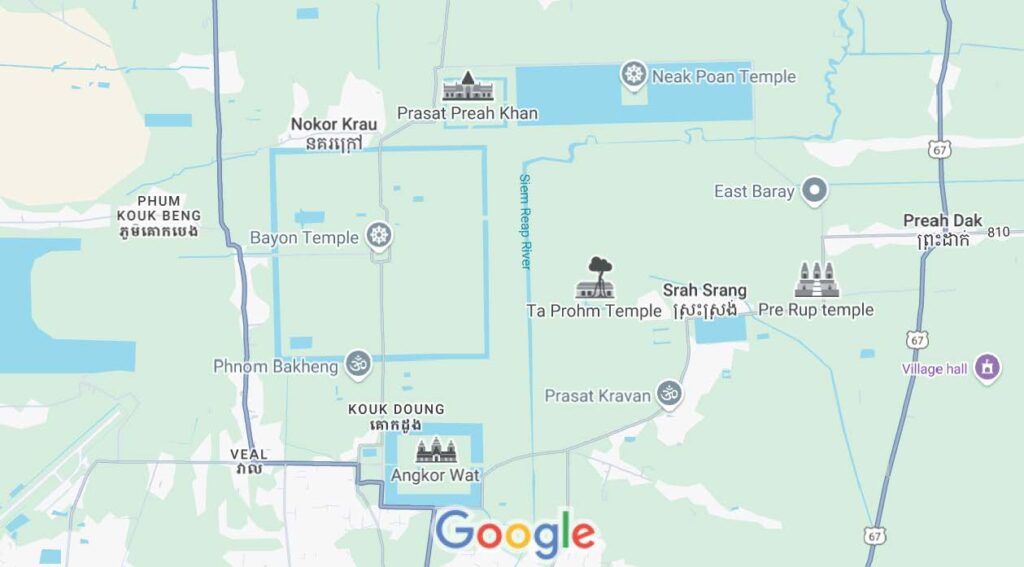
For tourists this means it is way too large to walk around. Having a driver is essential. Either that or you need to rent a scooter. Or join a tour group.
Through some traveler friends we got the name of a local driver (not a guide) and made arrangements several weeks in advance for a three-day tour of the Angkor temple complex. For our group of four, the driver charged $125 for three days. We each purchased a three-day admission ticket for $62. Our cost for two to explore the Angkor temple complex for three days totaled $186.50.
Is it worth it? That’s the question, right? And the answer is a resounding yes.
On day one we are picked up at our hotel at 9:00 AM sharp. Our driver is sharply dressed, with a late model motorcycle, a super clean remorque (a four-seater tuk tuk), and a cooler full of ice cold water bottles.
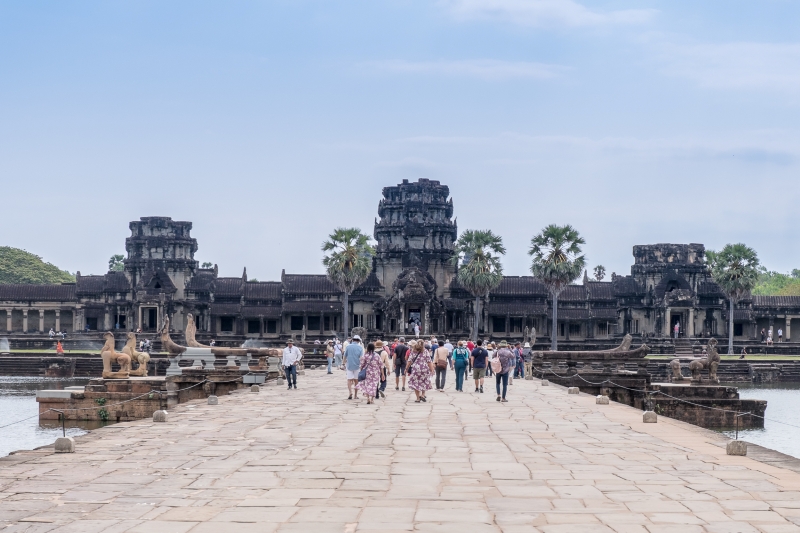
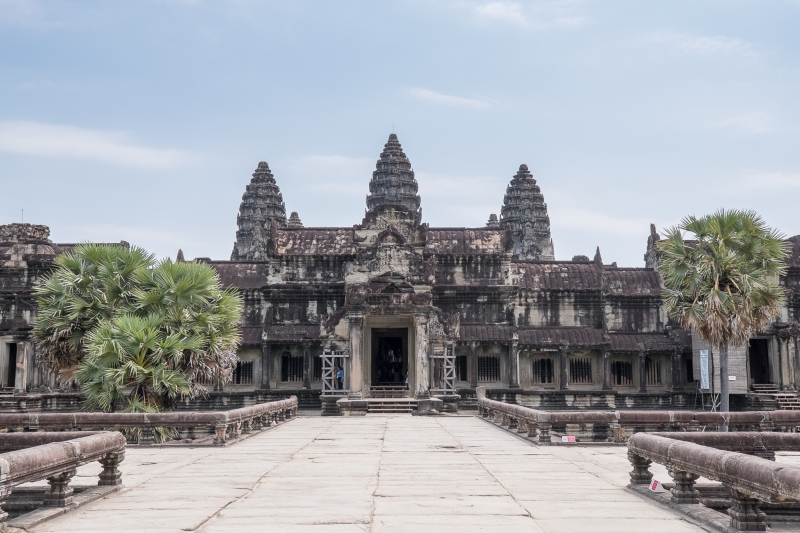
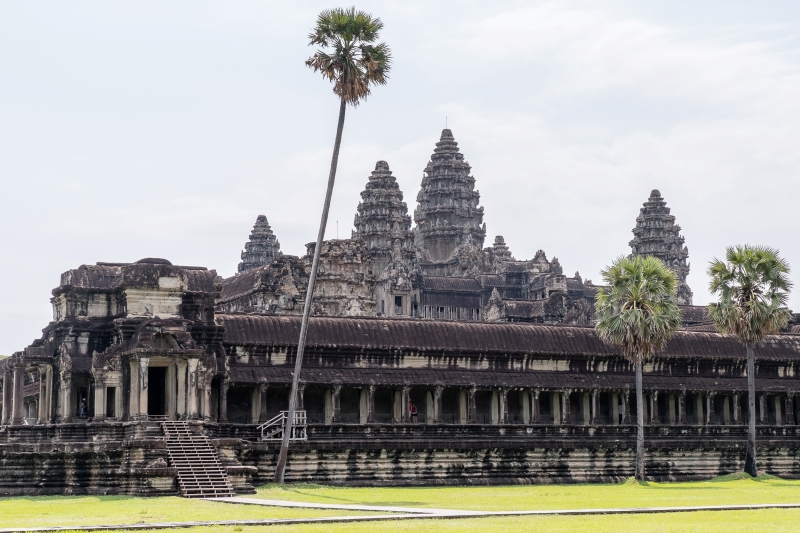
After introductions we are off to the Angkor Experience ticket office. There are literally dozens of ticket windows and no lines when we arrive at 9:30 AM. Each ticket is personalized with a photograph. Buying tickets through the Angkor Pass App is also an option. In hindsight I’m not sure why we did not buy electronic tickets.
Our first destination, along with pretty much every visitor, is Angkor Wat. Before exiting the remorque, our driver shows us where to go, gives us each a bottle of water to carry, and tells us that guides are available to hire if we so choose.
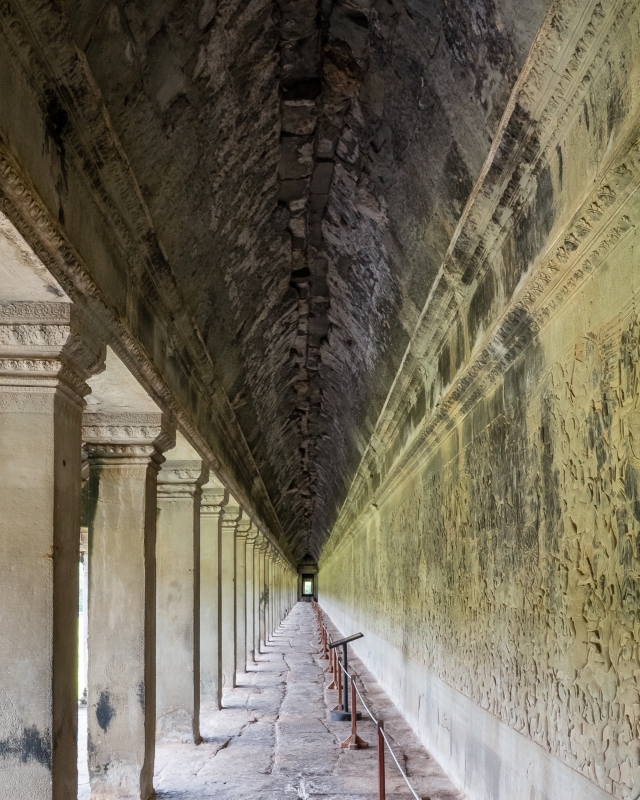
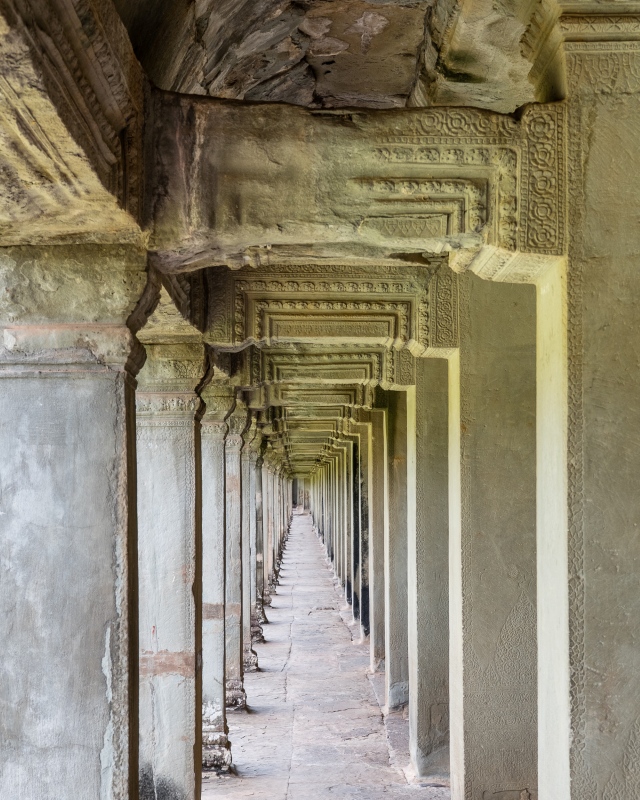
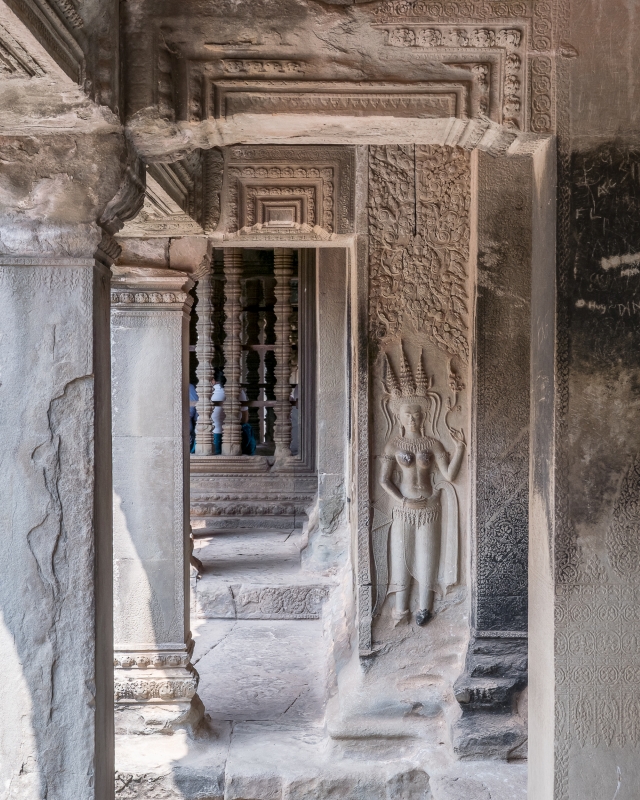
Guides for hire are located at most major temples in the complex. They’re the ones in the yellow long sleeve shirts. We did not want a guide so we unleashed a steady but polite stream of “no, thanks” to the locals in long sleeve shirts approaching us as we ran the gauntlet at the entrance.
The tickets takers, in the pink long sleeve shirts, ignored our repeated “no, thanks” and chased us down. I’m pretty sure tourists walking by repeating “no” is not uncommon as the ticket takers were non-plussed by the fact that we tried to avoid them.
Having learned the difference between the pink shirts and yellow shirts, we were better prepared for the rest of the temples.
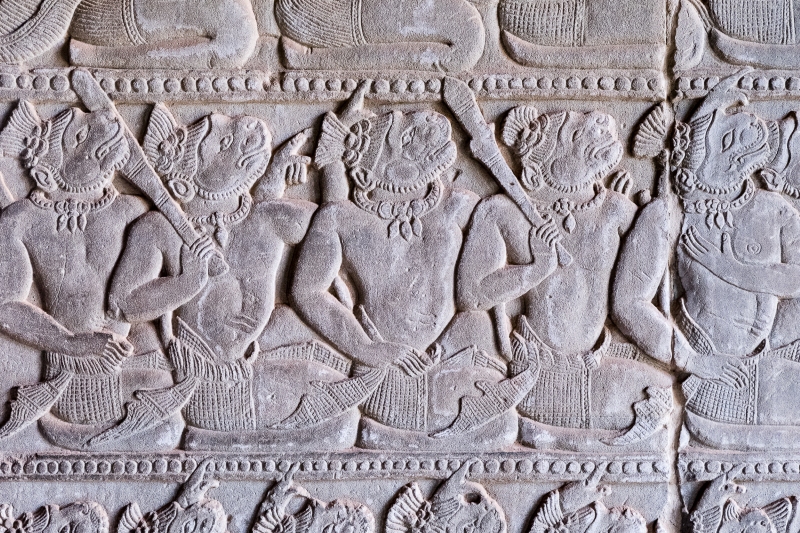
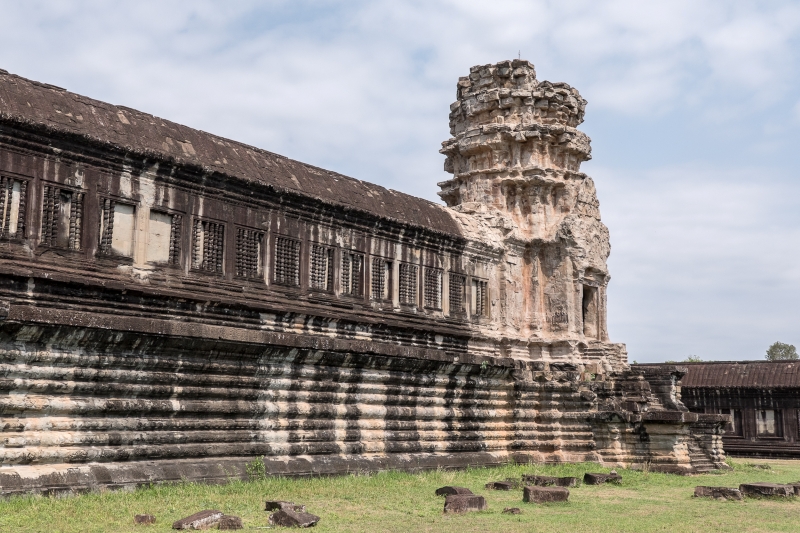
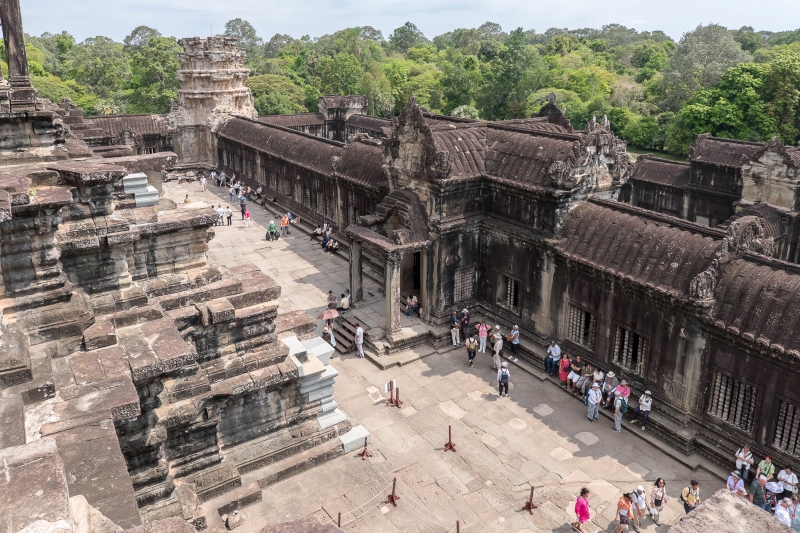
We entered Angkor Wat through the west gate, walking down the left side of the complex rather than going down the middle with all the other tourists. For our efforts we were rewarded with shade, but penalized by having to walk past vendor village.
Pretty much every temple of any size has a vendor village, ranging from a few carts with umbrellas to full size strip malls. I wished we had a digital recording of “no, thanks” on a continuous loop that we could have played.
Angkor Wat is the world’s largest religious structure. It was built by King Suryavarman II of the Khmer Empire in the middle of the 12th century. Originally a Hindu temple, Angkor Wat later was converted to a Buddhist temple about the same time as the adjacent Angkor Thom was built.
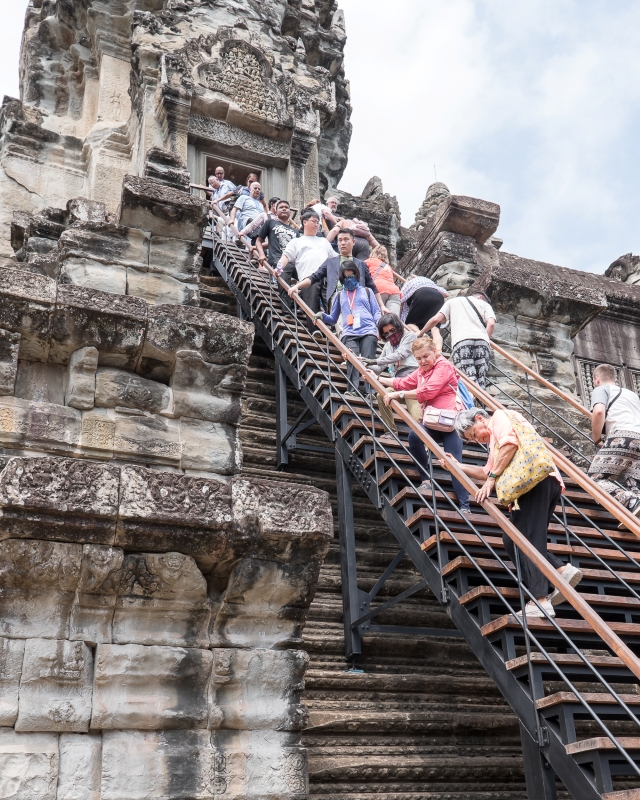
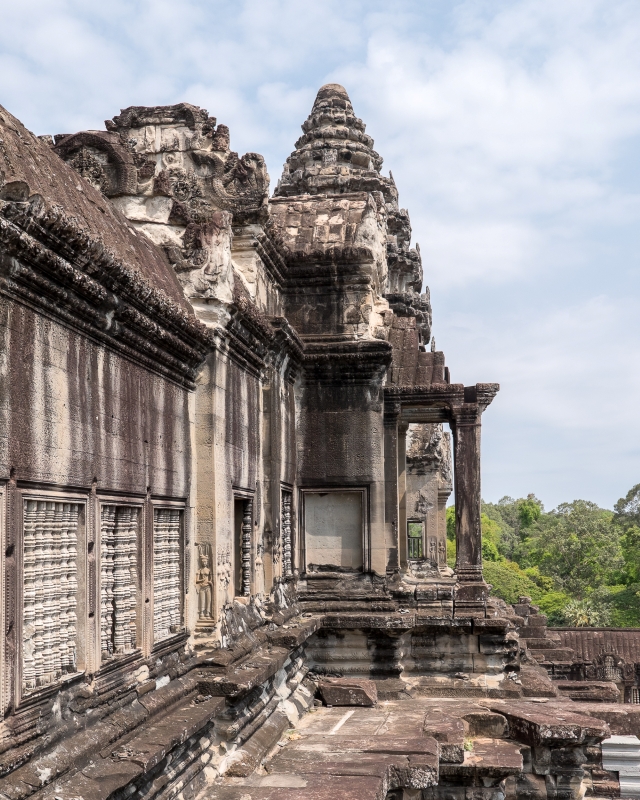
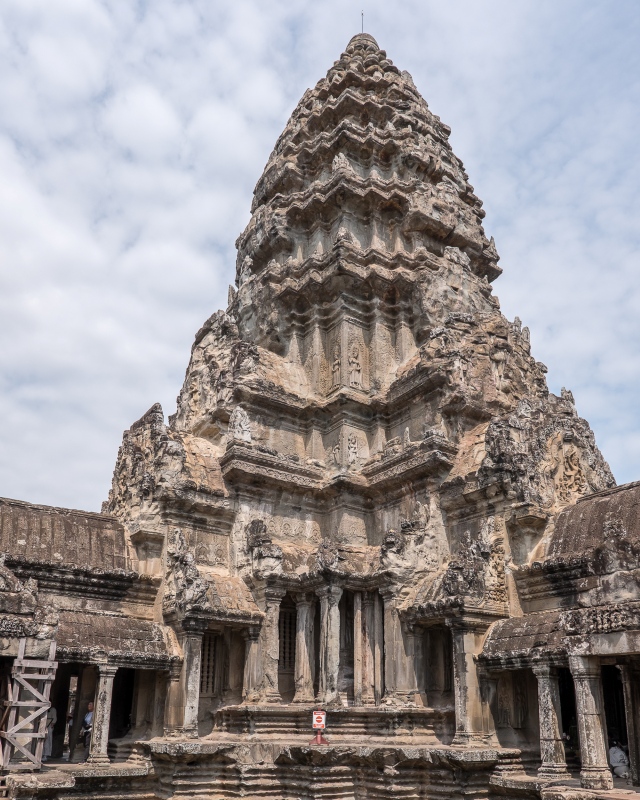
After walking around and through the outer walls, we found that the line to reach the temple’s upper level was basically non-existent. The only catch was going up a tall set of steep stairs. Because there was no line, we could take our time and not be rushed. Going up wasn’t bad. Going down was a different story. Everyone was moving so slowly down the steep stairs that we ended up in a line waiting about 10 minutes just to start down.
I couldn’t imagine how crowded this place must get during peak tourist season.
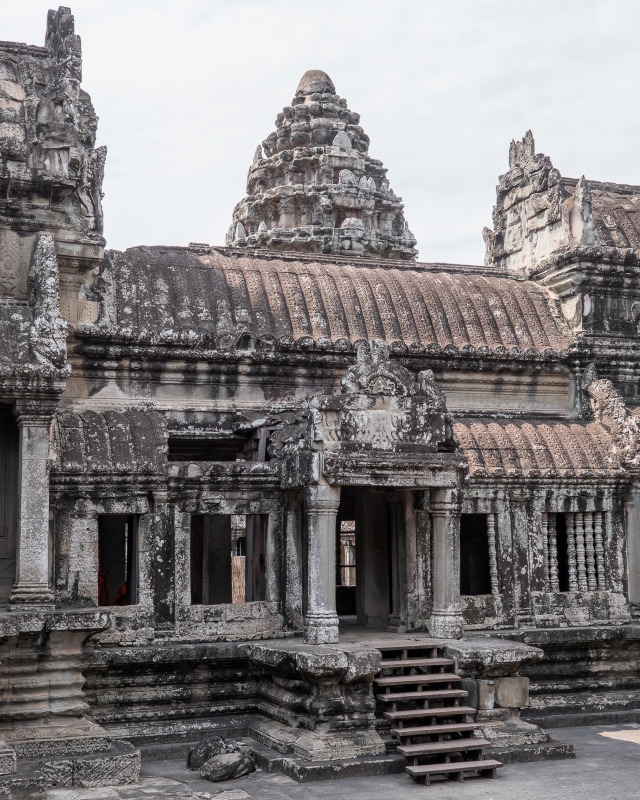
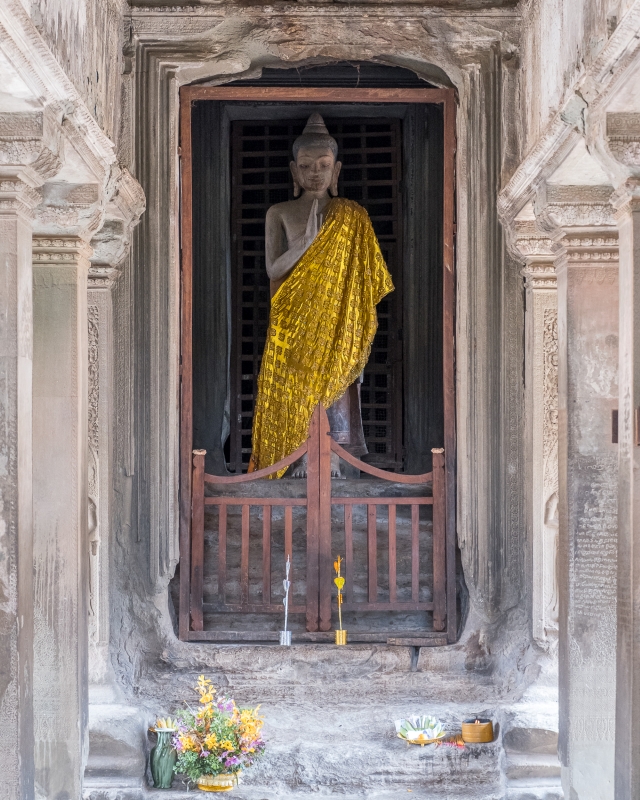
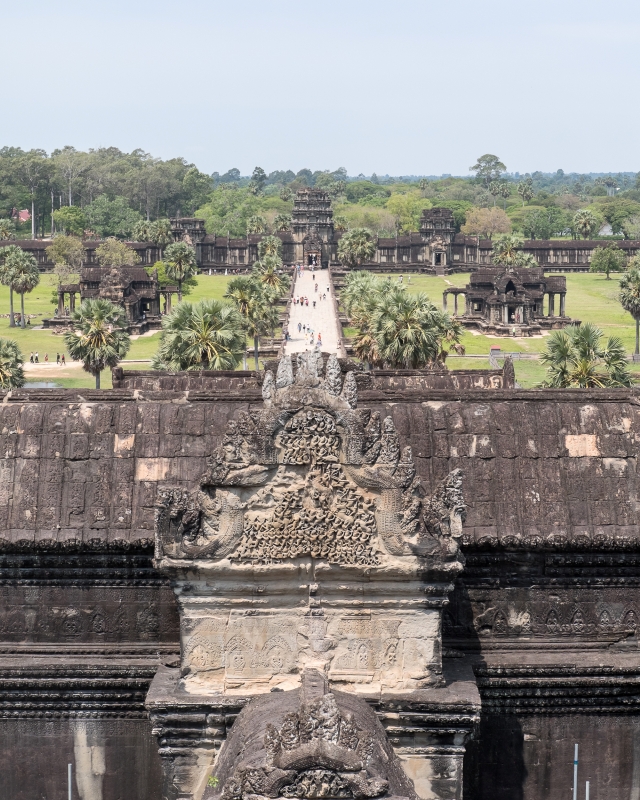
After about an hour and a half walking around Angkor Wat, we headed out looking for our driver and, more importantly, more cold water.
We got lucky and arrived in Siem Reap during what counts as a cold snap. The high temperatures are around 90° F (32° C). Next week the temperatures are projected to top 100° F (38° C).
For our second stop of the day we made the short drive to Bayon, the centerpiece temple of Angkor Thom. A unique feature of Bayon is the presence of faces in all of the towers. Without a doubt this is one of our favorite temples in the entire complex.
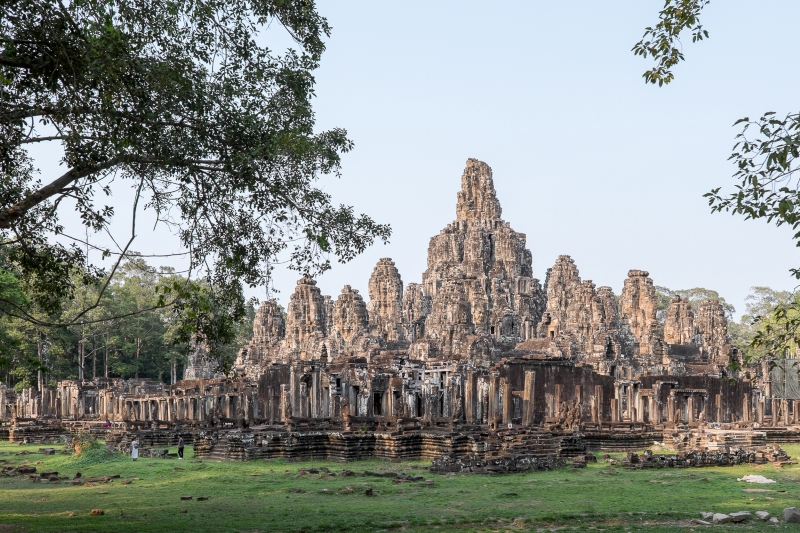
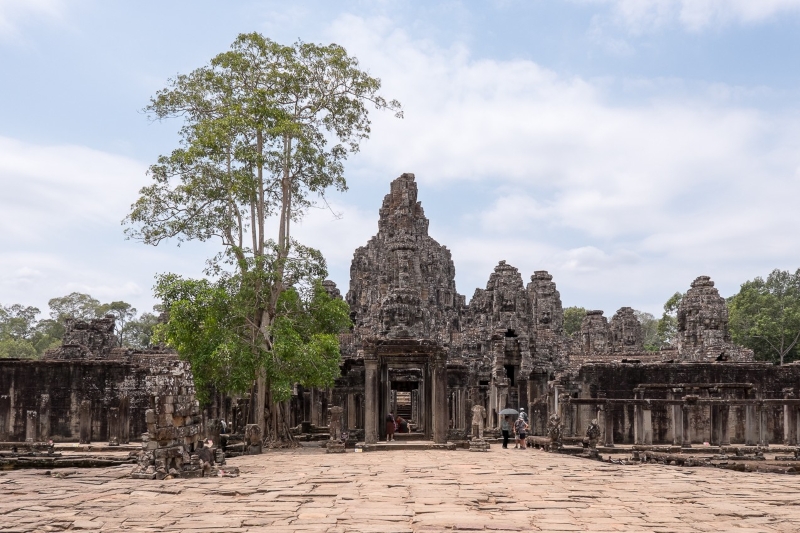
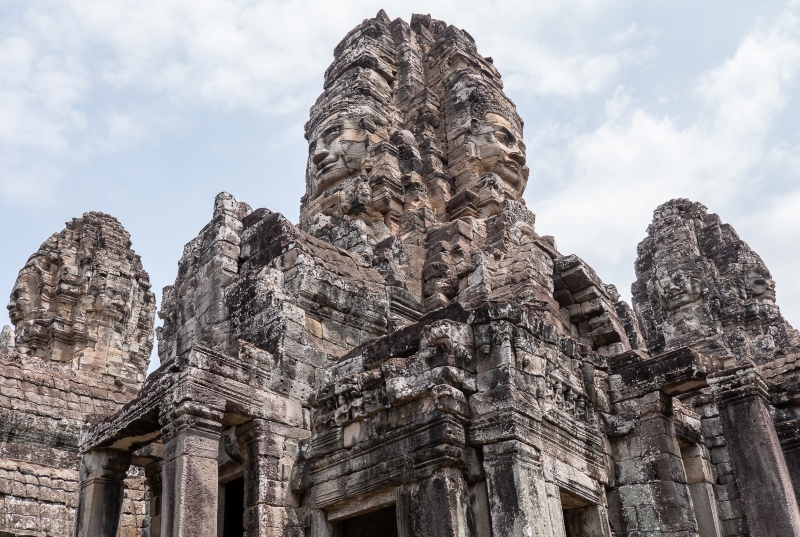
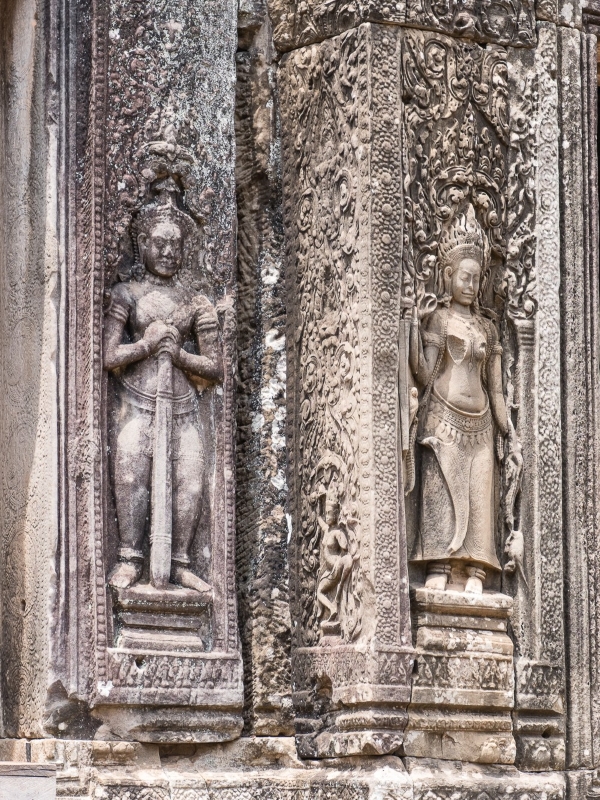
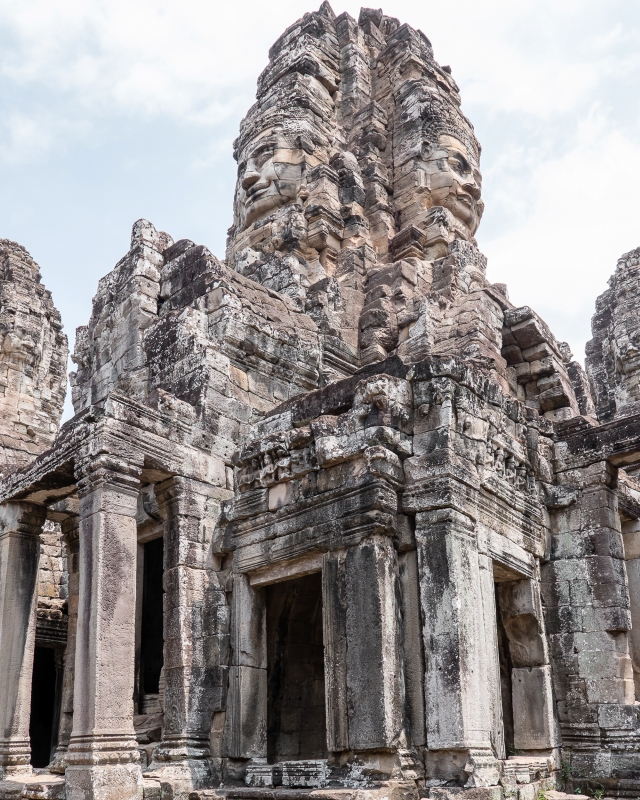
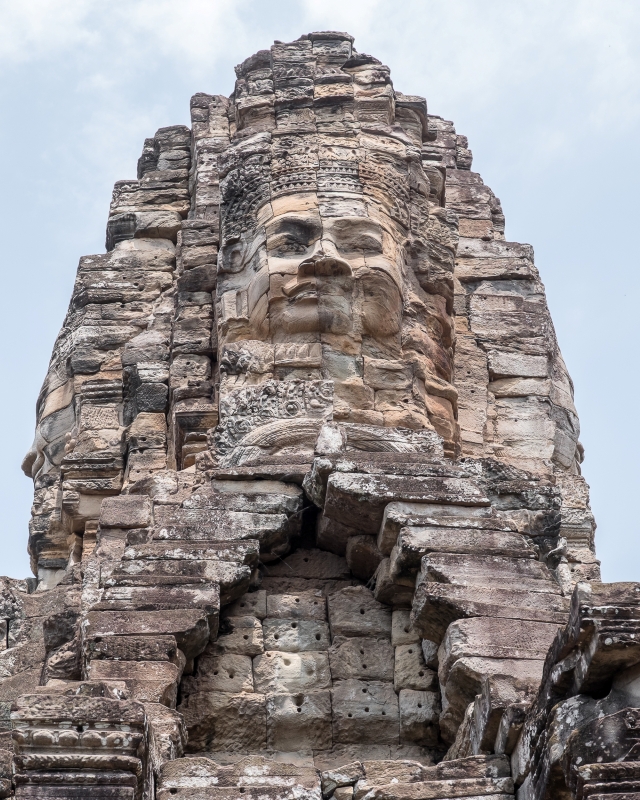
After Bayon we had a long lunch in an air conditioned restaurant before heading into Ta Prohm, which is perhaps most famous for appearing in the 2001 film Lara Croft: Tomb Raider. The striking feature of Ta Prohm is the number of trees growing out of and on top of the temple.
It was at Ta Prohm that Stephanie walked straight into a low door frame, made of stone, giving her a massive headache for the rest of the day. We also forgot to bring water with us. Not good.
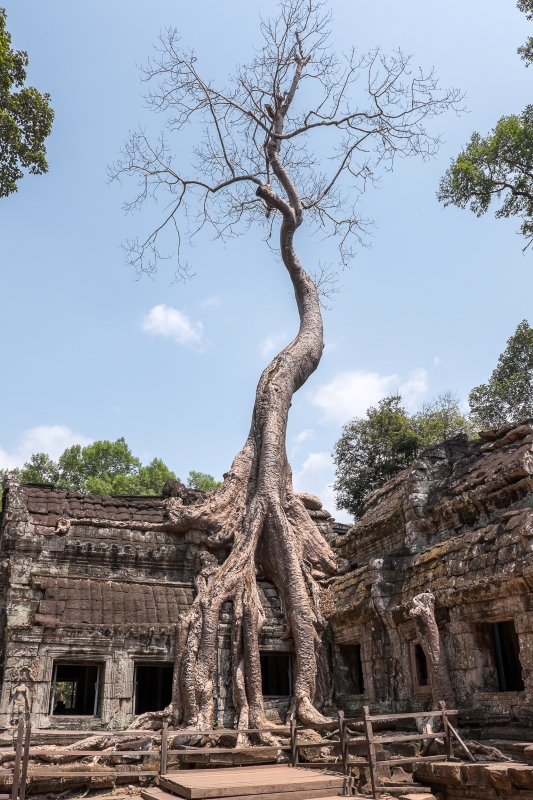
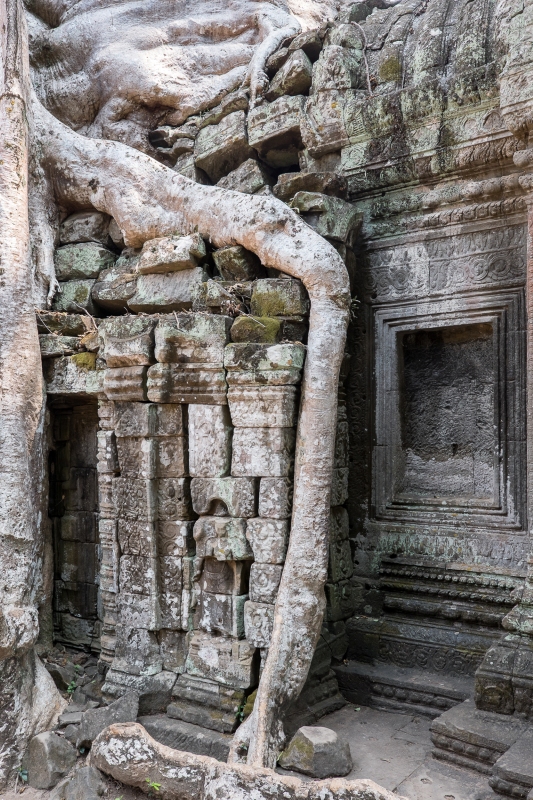
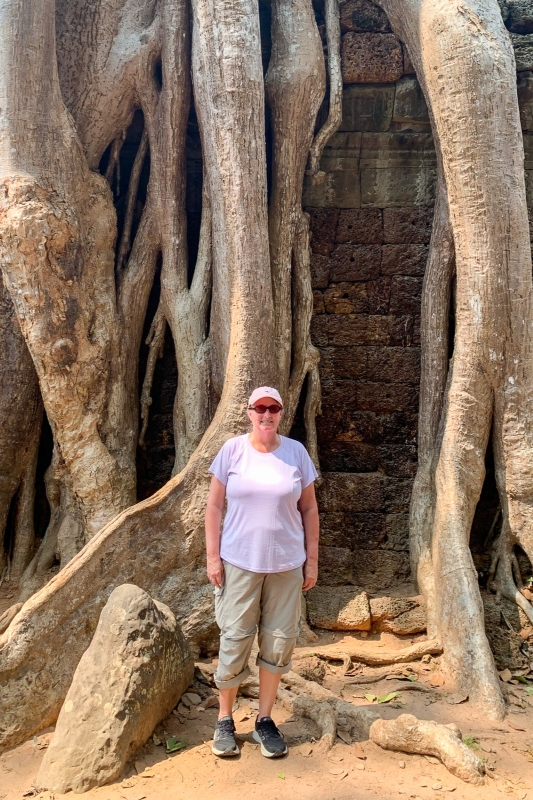
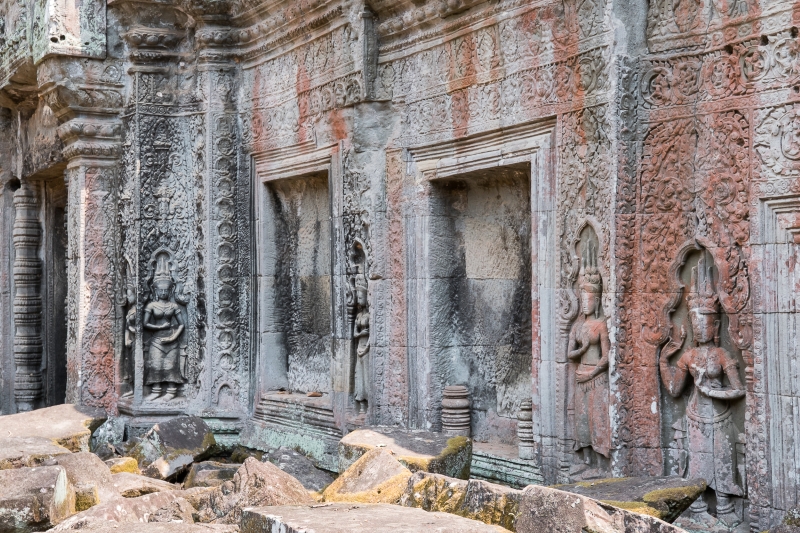
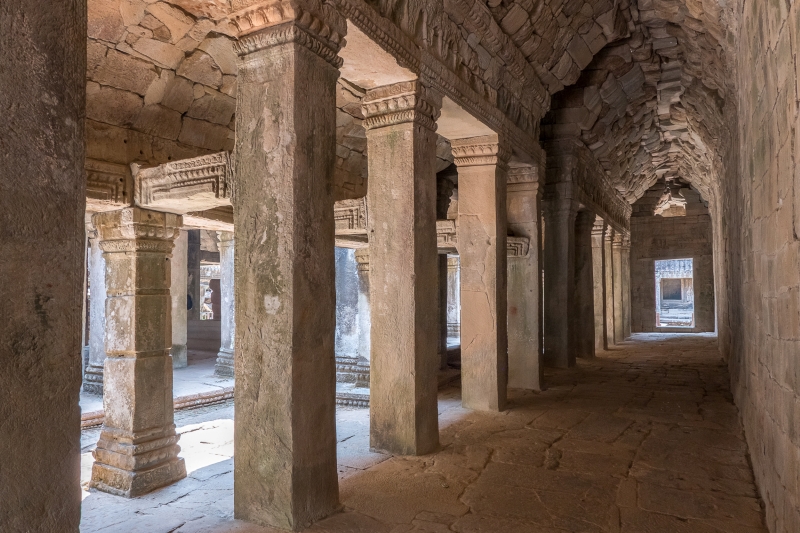
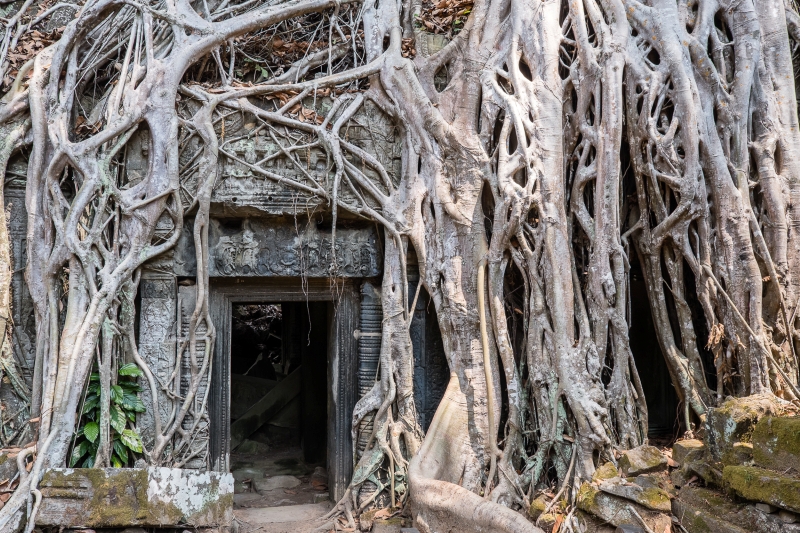
After short visits to two smaller temples, Prasat Kravan and Banteay Kdei, we decided to call it a day about 3:30 PM. We couldn’t drink enough cold water to keep from overheating. And I have never sweat so much in my life. It was sweltering in the temples.
Our driver offered to pick us up the next morning at 4:30 AM so we could go to Angkor Wat for sunrise. This is a very popular and trendy thing to do. We declined. He seemed surprised but agreed to pick us up at 9:00 AM the next morning.
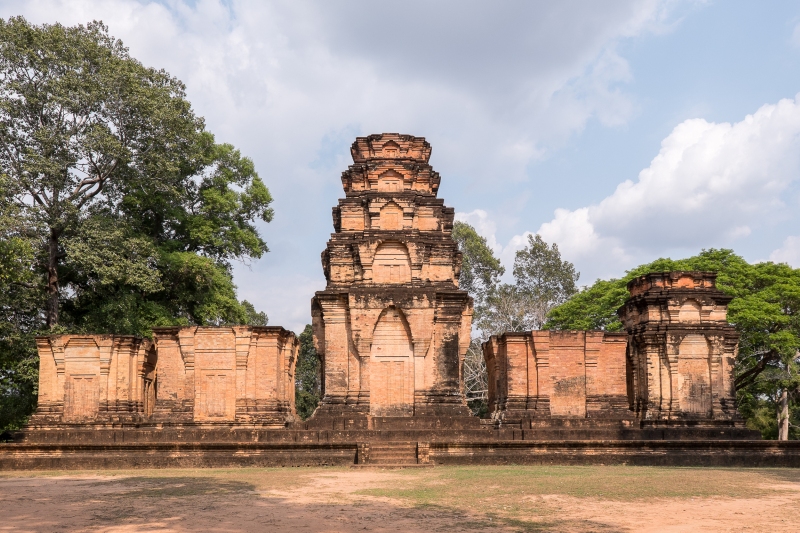
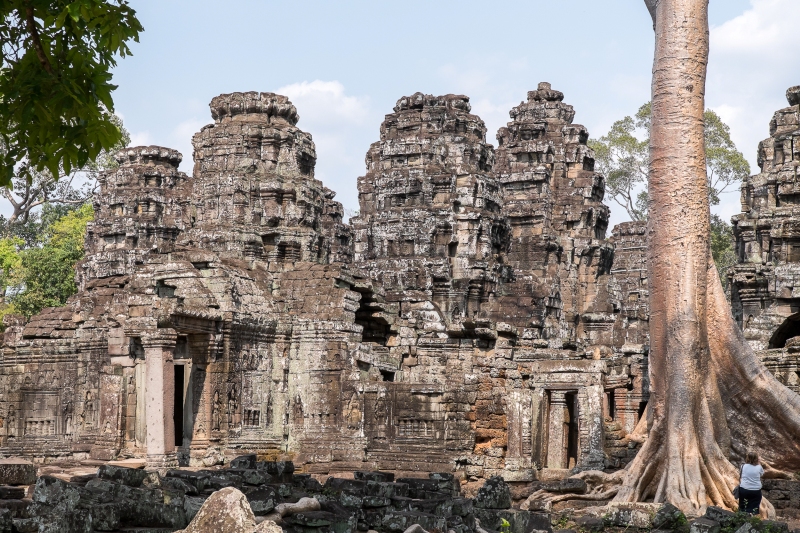
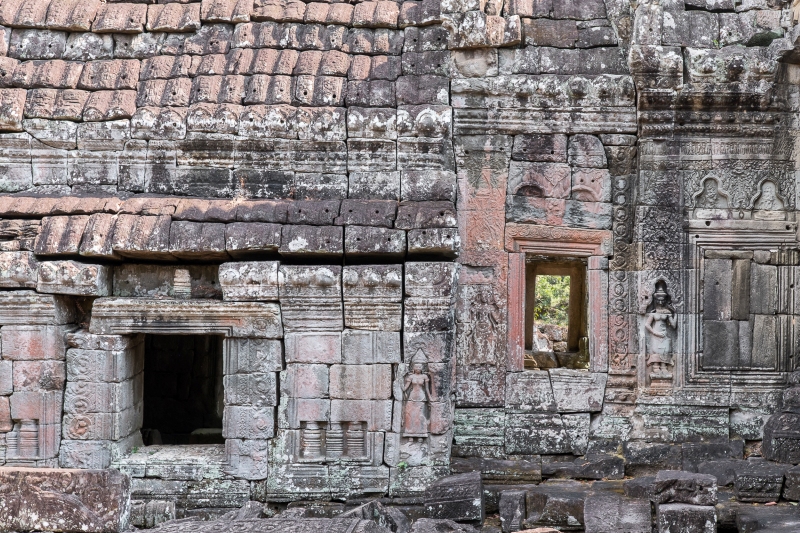
For the rest of the day we are going to the hotel pool, drinking as much water as possible, and hopefully getting a good night’s sleep to be ready for the next two days in the Angkor complex.
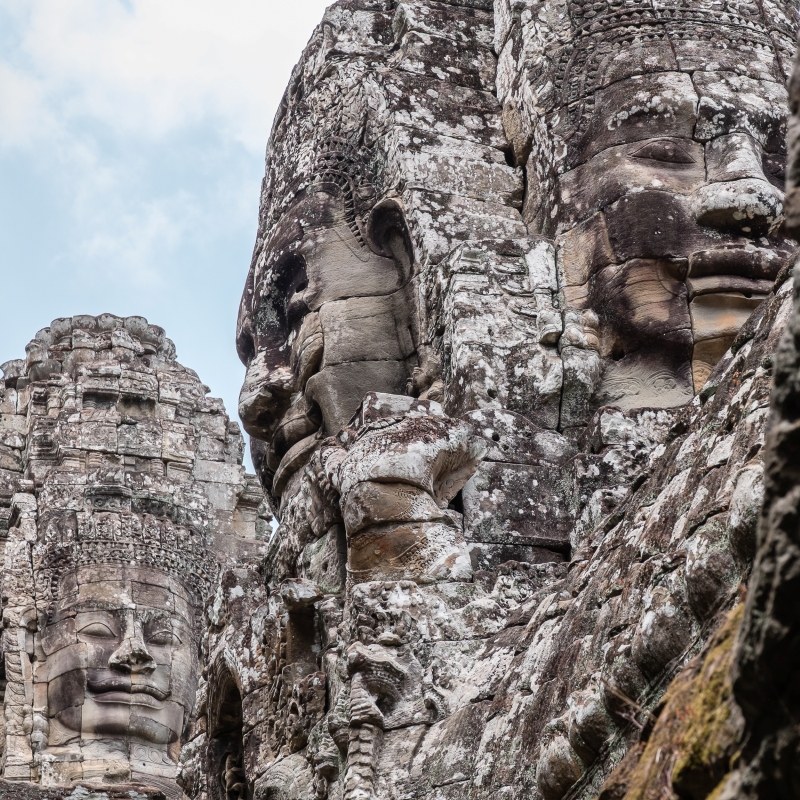
Garrett and Stephanie
If you have not already done so, read our other post about Angkor Wat:
Angkor Wat, Siem Reap, Cambodia (March, 2025, Part II).
For additional posts about Cambodia, or elsewhere in the world, check out our Travel Blog. It contains collected links to all of our travel posts.
Want to subscribe (or unsubscribe) for email notification of new blog posts? It is only two to three emails a month. Send your name and email address to slowtravelchronicles@gmail.com, and note subscribe (or unsubscribe) in the subject line. All email addresses will be kept confidential and not sold to any third-party. You won’t get any marketing junk or sales pitches from us.
